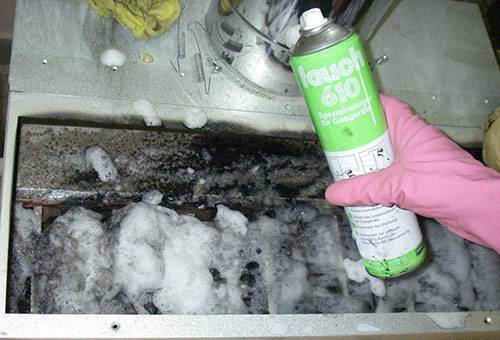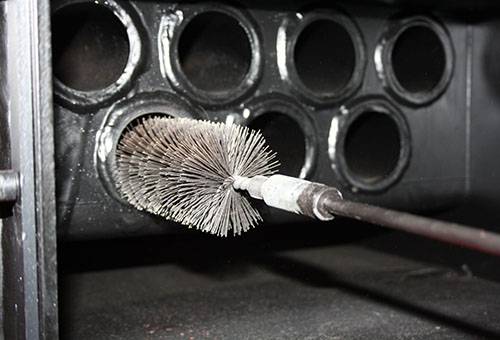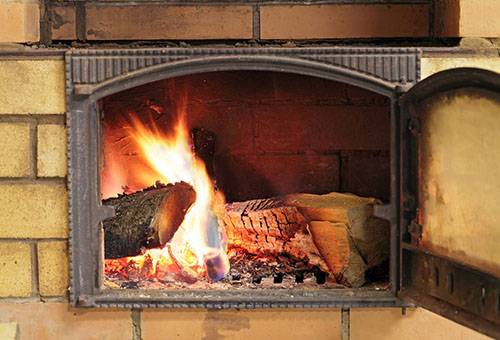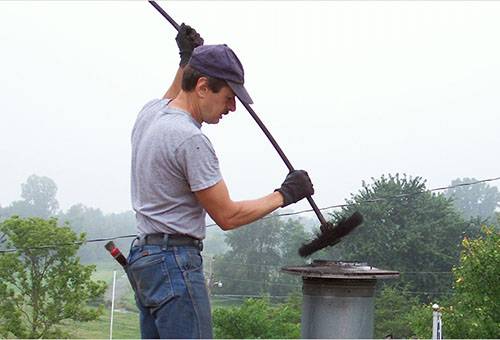How to clean soot from a boiler, stove and chimney
Cleaning soot from heating equipment at home is necessary to extend its service life and in accordance with fire safety requirements. The fact is that soot particles can ignite from random sparks, leading to a fire, and their accumulation prevents the smoke from fully escaping.
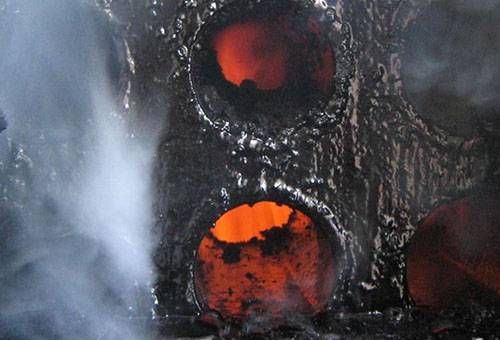
Boiler cleaning
When the chimney becomes dirty, as a rule, automatic control systems are activated, notifying residents of problems with smoke removal and the need to clean the system. This is not provided inside the boiler, and you must monitor its contamination yourself so that poisoning from combustion products does not occur and the device continues to function normally.
Before cleaning the boiler, you must turn off the gas and power supply, wait until the boiler has completely cooled down, and then carefully disassemble it. Cleaning can be carried out in two ways - chemical and mechanical.
Chemical cleaning
The first option is less dusty and faster. Sulfamic and adipic acids, as well as special gels, are used. But chemicals corrode not only the soot itself, but also the metal of the boiler. This harmful effect can be reduced by diluting cleaning products, but it will not be possible to make them completely safe for metal. This is how it is recommended to clean only small stains that do not require prolonged exposure to the metal.
If, nevertheless, it is decided to use the chemical method for large accumulations of soot, then neat grooves are left on their surface with a brush or scraper, which will help the solvents to better penetrate the soot. The acids are diluted in water and pumped under pressure into the boiler container, then they are washed out with a large amount of water.
Mechanical cleaning
This cleaning method involves physically separating soot from the surface. It is also imperfect - it is a long process, and if handled carelessly, it is also harmful to the boiler. Trying to remove soot, its walls can be severely scratched, which will lead to accelerated corrosion of the metal. To prevent this, choose items for cleaning that do not have sharp corners. Tools for mechanical cleaning of the boiler are often included with it - these are scrapers, wire brushes, and pipe cleaners.
They clean the boiler either simply with brushes, or use various abrasive substances with them. For a thin layer of soot of 1-2 mm, ordinary soda is also suitable.
In addition to soot, cleaning will also remove salts that have settled from the water - scale. This scale must also be removed from time to time by cleaning the boiler heat exchanger, mechanically or chemically. During mechanical cleaning, it is regularly washed with running water, and during chemical cleaning, acids are pre-mixed with water and heated. Gel chemicals do not need to be diluted but are added directly to the cooled heat exchanger. They are slightly less effective, but at the same time less aggressive towards metal.
Filling the boiler with water, boiling it and then draining it will help to significantly reduce the amount of soot. Many boilers also provide air cleaning - there are holes for supplying air under pressure.
Advice
When cleaning the boiler and stove with any chemicals, work should be done with protective gloves and preferably closed clothing, because all these products are more or less aggressive and dangerous to the skin.
Removing soot from the stove
The color of the flames and smoke indicates first of all that it is time to clean the stove and chimney. The optimal color of a stove flame is light orange. If significantly darker shades begin to predominate, this indicates a lack of traction in the system. The same thing is indicated by the black color of smoke from the chimney.
Soot accumulates in a stove much more slowly than in a chimney, so it needs cleaning less often. To avoid having to remove all the debris from the stove again, it is cleaned after cleaning the chimney. This is usually done manually with stiff brushes, and a vacuum cleaner is used to collect soot scattered throughout the room.
The vacuum cleaner can be used as a special construction vacuum cleaner, or you can use some old Soviet device for these purposes. It is important to clean it well after use. There is no point in washing the filter - the soot will only be smeared. Usually it is removed with dry sand - it is sucked up, the filter with sand and soot is shaken off, and if necessary, the procedure is repeated several times.
Chimney cleaning
Mechanical cleaning is carried out when the channel is significantly clogged with soot or foreign objects get into it. Naturally, the stove is turned off, the firewood is removed from it, and all the dampers are also closed so that soot does not fly around the room. A round chimney is cleaned with a brush slightly larger in diameter than the chimney itself. Square and rectangular chimneys are cleaned with brushes. If an impenetrable blockage occurs during cleaning, they try to remove it or push it down with a pole.If this does not work, then a device is used in the form of a ruff suspended on a rope with a heavy metal ball at the end.
The chimney can also be cleaned of soot by adding special substances to the fuel, which during combustion contribute to the decomposition and burning of the soot - it partially burns, and partially crumbles into the firebox, from where it can be easily removed. These drugs are available in the form of liquid, powder and solid briquettes. To prevent the chimney from becoming clogged, it is recommended to use them regularly, strictly following the instructions in the instructions for use, in order to prevent fires and poisoning from combustion products.
Advice
As a preventive measure, one simple folk method is often used. About a bucket or two, depending on the volume of the oven, of potato peelings is burned without the use of additional fuel. The starch released during the process helps burn off the soot.
As you can see, there is nothing difficult in cleaning the boiler and furnace from accumulated soot. Subject to safety and accuracy, this work can be done by anyone living in the house, and there is no need to call a specialist every time. But no less important than proper cleaning of the stove and boiler is the use of high-quality fuel. And even more so, in no case should you use plastic items or leftover food for this purpose. It is important to remember that proper operation of the furnace will help minimize the formation of soot and reduce the frequency of necessary cleaning of the home heating system.
